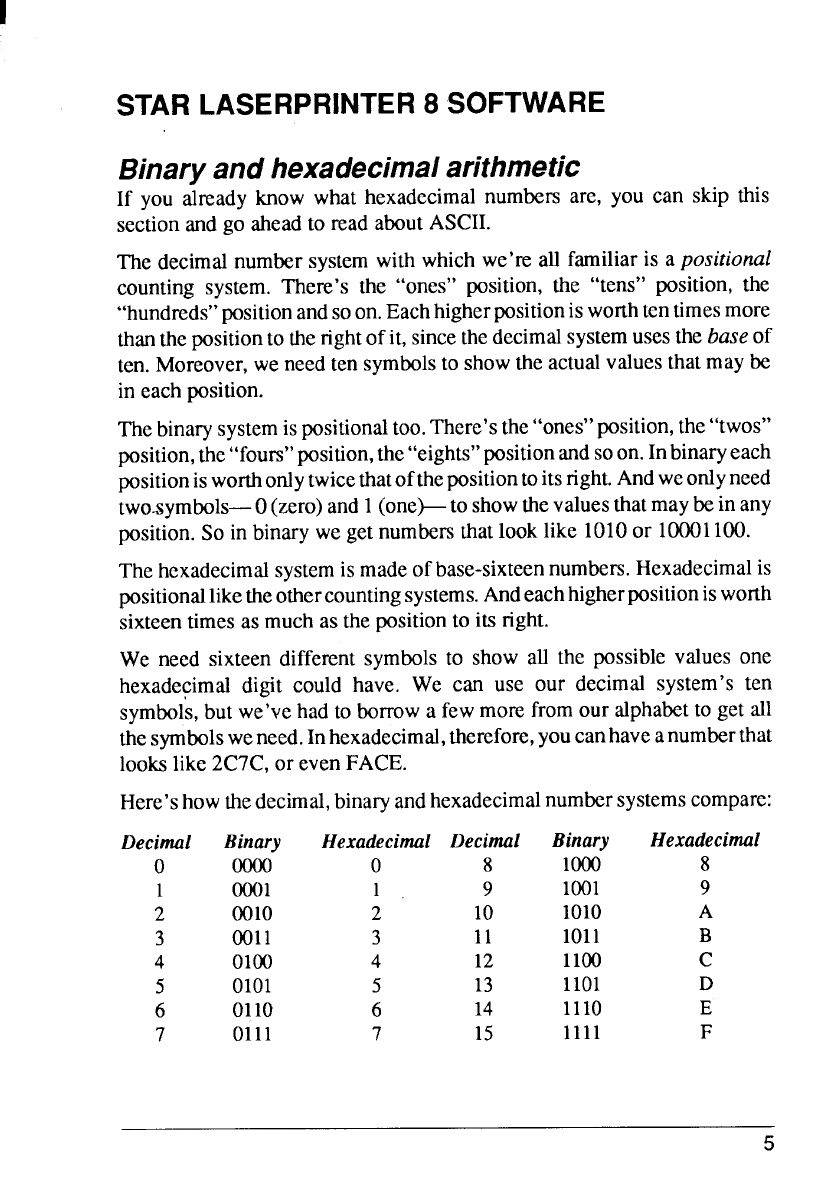
STAR LASERPRINTER 8 SOFTWARE
Binary and hexadecimal arithmetic
If you alreadyknow what hexadecimalnumbersare, you can skip this
sectionandgo aheadto read aboutASCII.
The decimalnumbersystemwith whichwe’re all familiaris a positional
counting system. There’s the
“ones” position, the “tens” position, the
“hundreds”positionandsoon.Eachhigherpositionis worthtcntimesmore
thanthepositionto therightofit, sincethedecimalsystemusesthebaseof
ten.Moreover,weneedtensymbolsto showtheactualvaluesthatmaybe
in eachposition.
Thebinarysystemispositionaltoo.There’sthe“ones”position,the“twos”
position,the“fours”position,the“eights”positionandsoon.Inbinaryeach
positionisworthonlytwicethatofthepositiontoitsright.Andweonlyneed
twosymbols-O (zero)and 1(one)-to showthevaluesthatmaybe in any
position.So inbinarywe getnumbersthatlooklike 1010or 10001100.
Thehexadecimalsystemis madeofbase-sixteennumbers.Hexadecimalis
positionalliketheothercountingsystems.Andeachhigherpositionisworth
sixteentimesasmuchas the positionto its right.
We need sixteen differentsymbolsto show all the possiblevalues one
hexadecimaldigit could have. We can use our decimal system’s ten
symbols,butwe’vehad to borrowa fewmorefromour alphabetto get all
thesymbolsweneed.Inhexadecimal,therefore,youcanhaveanumberthat
lookslike2C7C,or evenFACE.
Here’showthedecimal,binaryandhexadecimalnumbersystemscompare:
Decimal
o
1
2
3
4
5
6
7
Binary
Ooo1
0010
0011
0100
0101
0110
0111
Hexadecimal
o
1,
2
3
4
5
6
7
Decimal
8
9
10
11
12
13
14
15
Binary
1(W3
1001
1010
1o11
1100
1101
1110
1111
Hexadecimal
8
9
A
B
c
D
E
F
5


















